A photo editor goes to Mosul to understand how photographers influence the way we see a war.
During the two decades she spent working in the magazine industry in Brazil, Cristina Veit never thought of herself as a photographer. She was a designer first, and then a photo editor, who eventually ended up becoming the art director of National Geographic Brazil. For 12 years, she worked with Brazilian photographers to create photo essays for the esteemed magazine. But when she was let go in 2013, she suddenly had to figure out what was next for her. Last year, when three photographers she knew started planning a trip to Mosul, she decided to try photography herself. Her project “The Battle for Mosul—Image Makers” is a look at how photographers create the stories we read.
R&K: Your first idea for a story in Mosul was to follow Brazilian journalists covering the war. How did your project transform?
Veit: Before this project, I had never tried to photograph professionally. Last year, I bought a camera and began to try things. I was mainly focusing on writing, but I still brought my camera everywhere I went and thought I could illustrate my written pieces that way. When I followed these three photographers in Iraq, they were going to very interesting places right away. I arrived on the morning of Dec. 24 and we spent Christmas Eve with a Christian family who had fled their city and were living in a camp. The following day, we went to the city of Qaraqosh, which had just been taken from ISIS. They were celebrating mass for the first time in two years.
There were lots of photographers there, and it was my first time watching photographers working on a news piece like that. I also went went to the frontlines with them. It was mid-January and the Iraqi army was fighting ISIS in the eastern part of Mosul. We were passing all the checkpoints and they kept saying, “Oh no, you can’t go there today without an armored vehicle.” So they only allowed us to go to this one trench [photo below]. When we arrived, this guy began shooting because press was there. I took this shot.
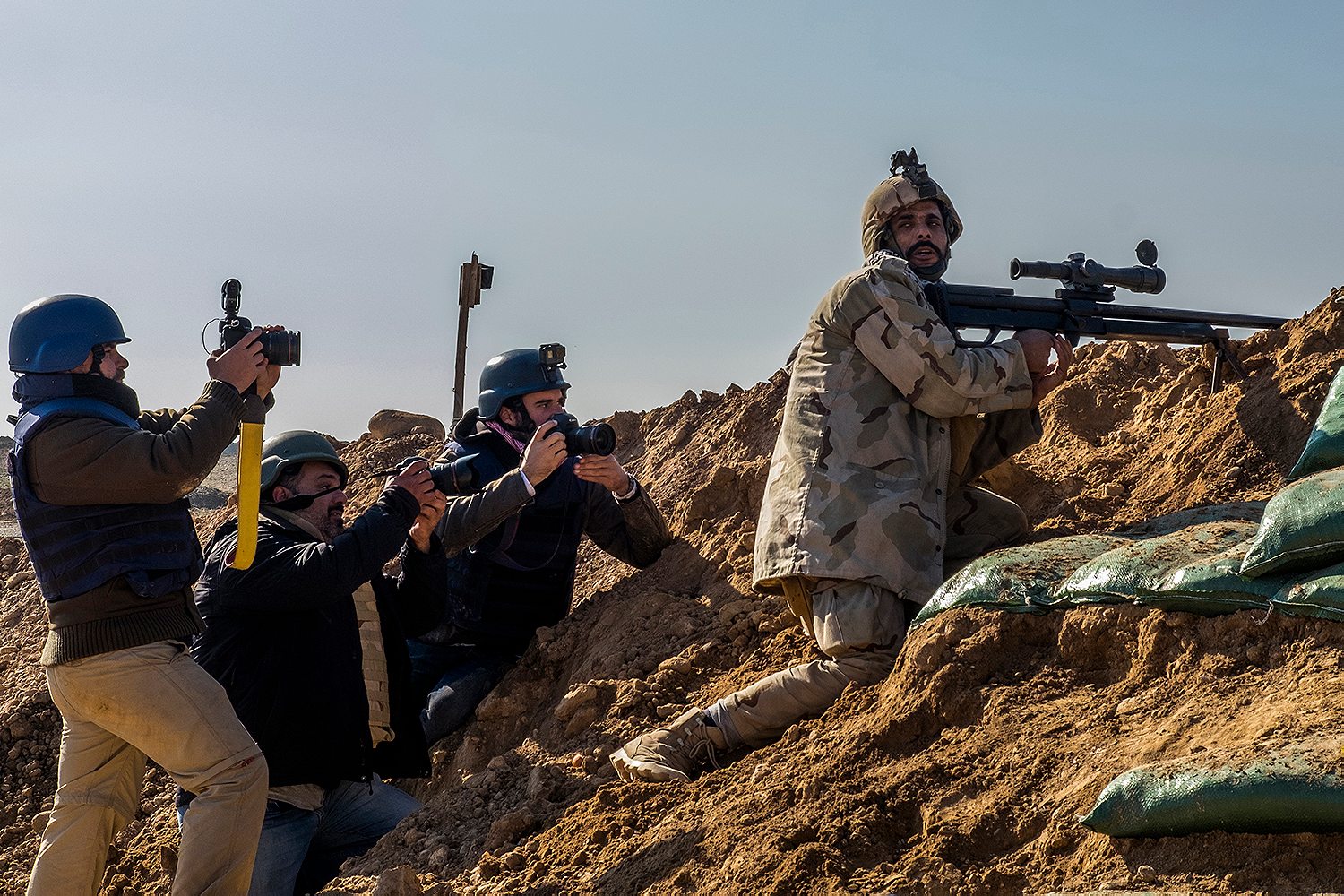
It’s a very artificial image of war. What struck me was how different it was to the images that the photographers who were with me were posting on Facebook. The photos they took were really in the middle of the war, there were explosions and sand flying in the air. They were very strong and powerful, but they had been created in an artificial environment. I thought that was interesting, and started thinking about how journalists work as propaganda for how the army wants to be seen, shooting and defending in their glorious moments.
Then a couple of days later, I met this German photographer who had this very different personality because he was an artist, not a conflict photographer. His project there was that he wanted to photograph ISIS car bombs that hadn’t detonated, which I thought was an original approach to the story. I followed him on his search for the car bombs and I also went up with him to a refugee camp he was photographing for Süddeutsche Zeitung, a German publication. Some weeks later, when he had already left Iraq, I saw the published work and it was a really artistic approach, visually, of the war. I went to the same places with other photographers and the result is completely different. So for me as a photo editor, it was fascinating to see that. I decided to spend more time in Iraq. Each week I was meeting photographers working on different projects. That’s when I decided to shoot “The Battle for Mosul—Image Makers.”
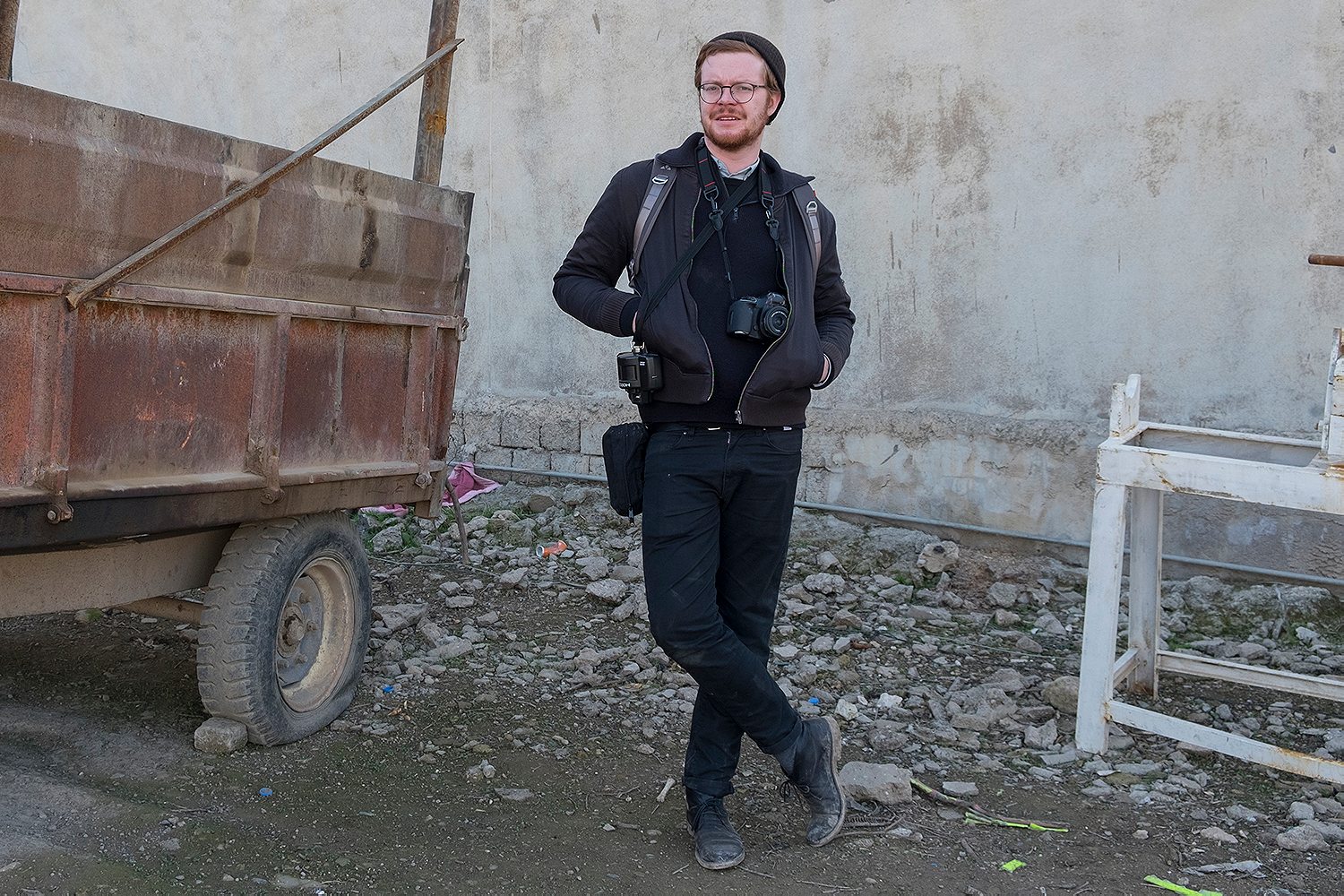
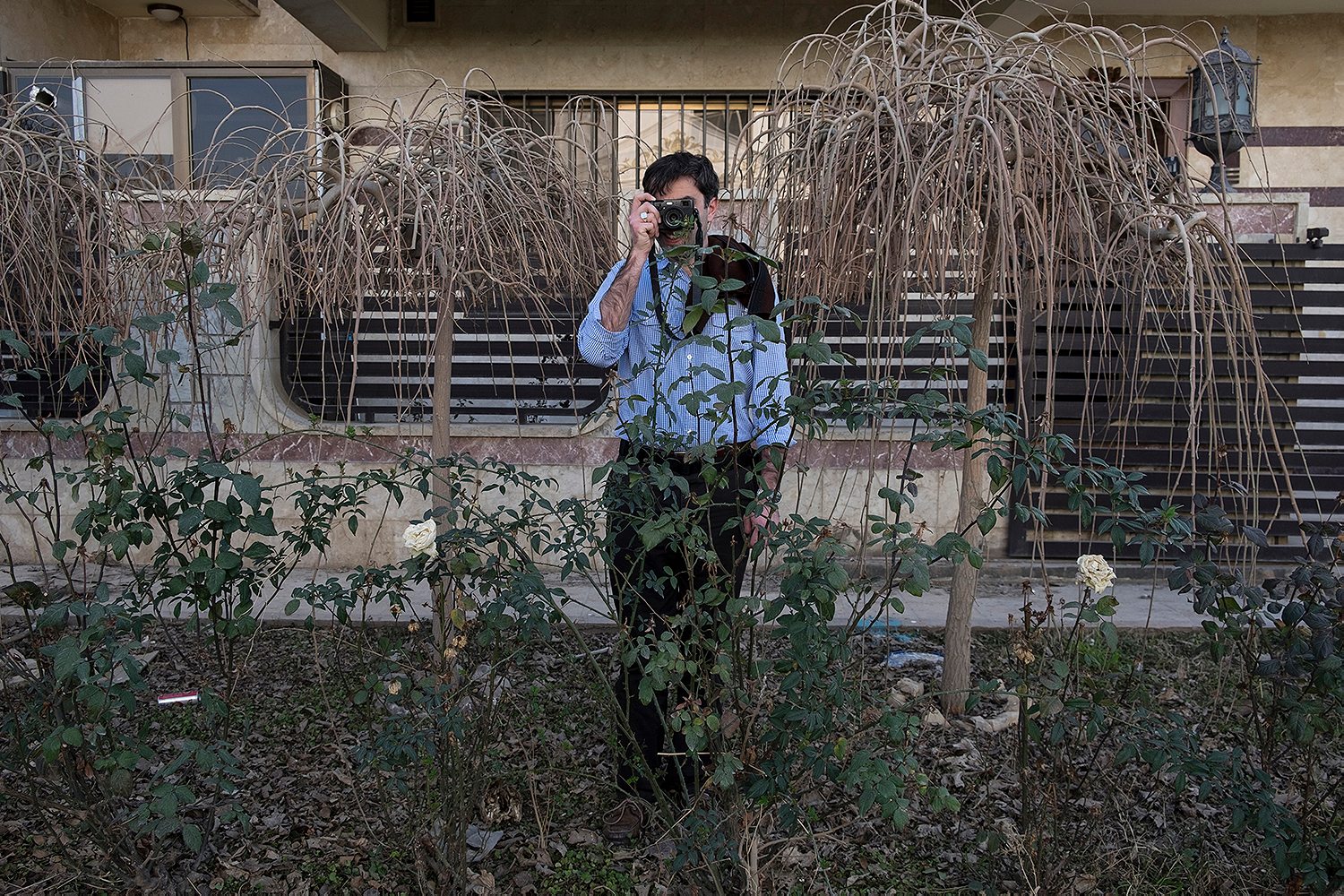
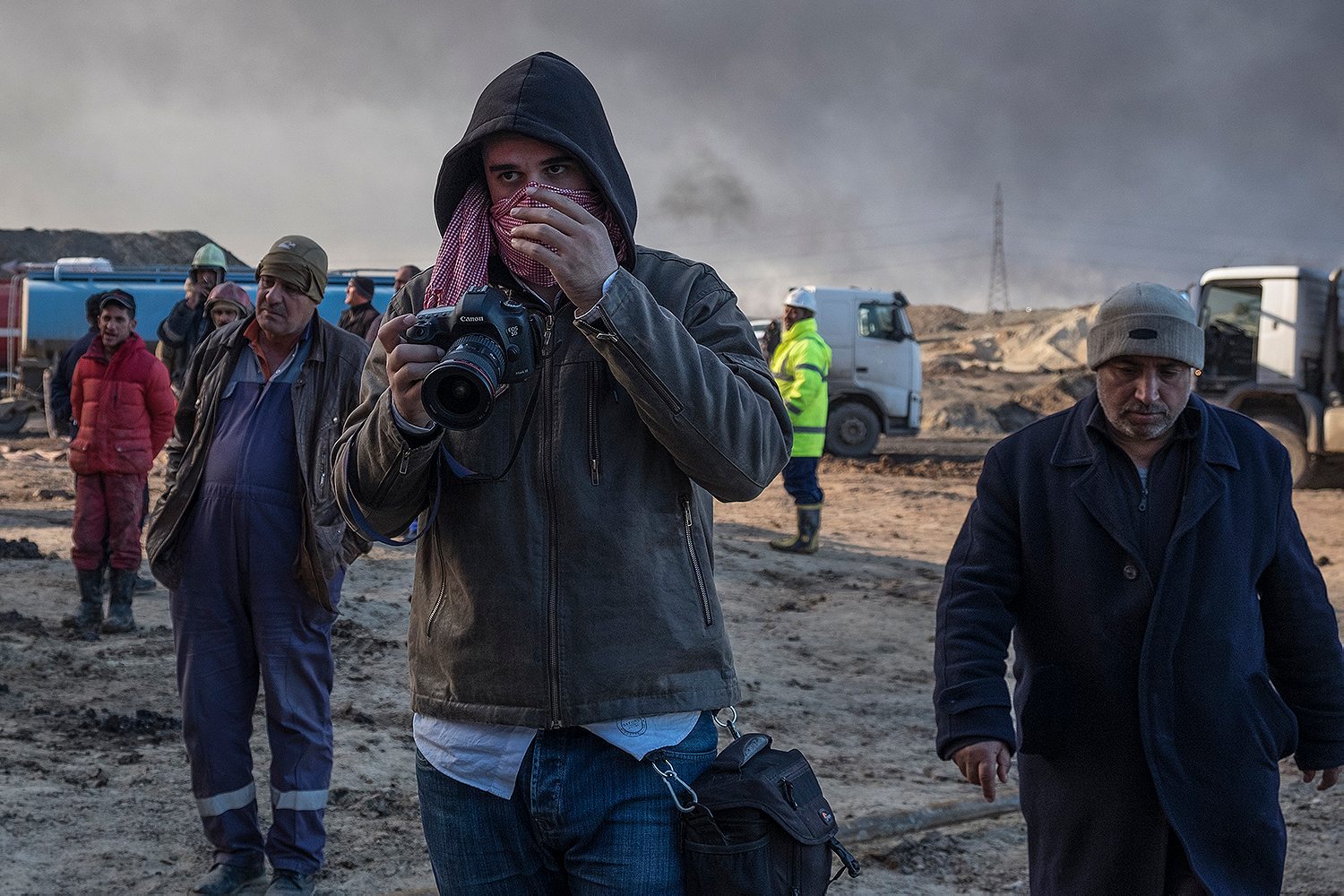
R&K: How would you describe the work that has come out of Mosul since the offensive?
Veit: There are wonderful professionals working there, making powerful images of the war. But I think the side stories are what’s more interesting—we have seen so much war photography and we have seen so many war movies that things begin to mix up in our minds. I think these side stories are what brings us closer to the subject. And unfortunately, you don’t usually see them in the mainstream media, so the general public doesn’t have access to them. I think it’s interesting because when I show people this work, they always say, “Oh, I didn’t know all this was going on.”
R&K: Did you feel this way about photojournalism before this trip? Did you realize how much we were missing from the story?
Veit: I had no idea. I had no idea it was such a rich environment for creating stories. From the first day at the Christian camp, I got a completely different image that I had in mind. The camp received money from Christian NGOs, so people lived in shipping containers and they could open shops and they were free to go and come back as they pleased. You had the same variety of shops in this camp as in the neighborhood it was located in. I thought it would be interesting to do a photo essay about the shop owners. So I did a piece with one of the Brazilian photographers who was with me, who’s a really good portrait photographer. I interviewed the owners and we created a project we were able to sell to a Brazilian magazine. And people, they really loved the story because, again, you’re showing other aspects of the conflict, which is rare in the mainstream media.
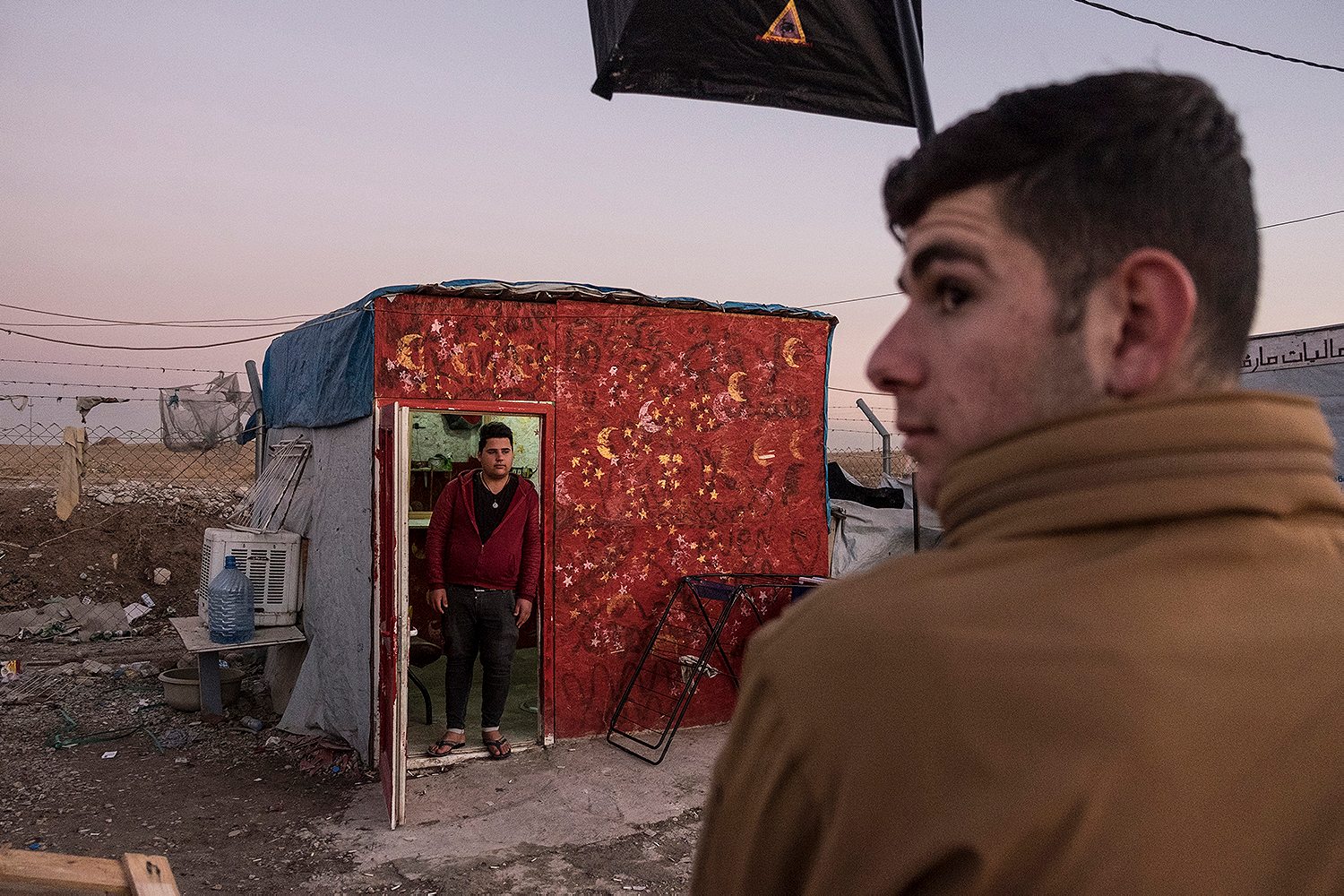
R&K: Because we’re not used to seeing photographers at work, some of your images could be seen as constructed or exploitative. Do you think it’s important to show how an image is constructed?
Veit: This [photo below] is Lorenzo Meloni, a photographer for Magnum. One of the projects he was working on was to photograph families in eastern Mosul who had been hit by airstrikes and were hurt inside their homes. When we went to this house, it had been three weeks since the eastern part of the city had been liberated. I don’t think it’s exploitative because it shows what the army had done. When they began the fight against ISIS, they advised the citizens of Mosul not to leave their homes. They said this would not be an air war. It would be fought street by street, on the ground, so people didn’t have to be scared of airstrikes. People stayed in their homes, but of course, airstrikes happened and a lot of people got hurt. That day, we went inside 10 different homes. These were people nobody was taking care of, because fighting was still going on there. So they were alone, and they wanted to tell their stories. It didn’t feel exploitative at all.
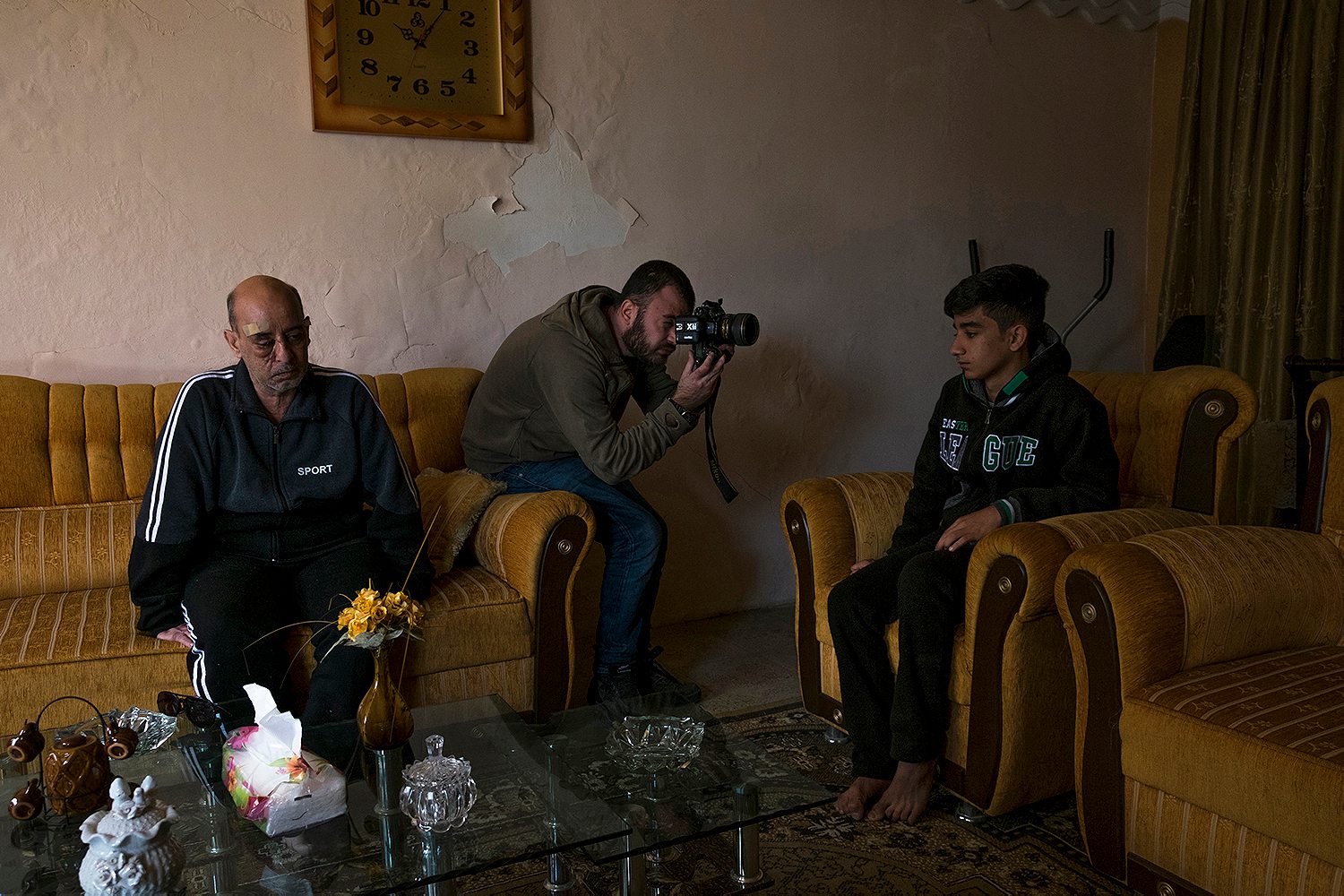
R&K: Taking a photograph can be quite intimate. Did you ever feel uncomfortable?
Veit: It’s funny because I just began photographing. This is my first project. So, of course, in the beginning I didn’t want to get in the way of the photographers. I was very careful not to disturb the work they were doing. But as the weeks passed I felt more confident and they began thinking it was an interesting project. Then one day I saw a photographer rolling a cigarette and photographed him. When he looked at me I said, “Sorry,” and he said, “No, I do this for a living, so go ahead, you don’t have to ask me.” You don’t have to ask permission from a photographer to photograph them; that’s interesting.
R&K: That being said, they’re not used to being on the other side of the lens, so it must have been interesting for them to be part of this project, too.
Veit: Yes, it was. One of them looked at my photos once and said, “Oh, I’m glad I’m not that guy in the trenches.”
R&K: Because he knows he could have been.
Veit: Yes, exactly. Another thing that really struck me is the number of young people working in this field. Photographers who are 20 or 23 years old, who just graduated from college but who already have been working for years in conflict.
R&K: And meanwhile, media organizations are less able to support or guarantee the safety of these photographers who have little experience.
Veit: Yes. Actually, I was staying at a house–photographers often share houses when they’re freelancers–run by an American photographer and a Danish journalist who teach courses about risk. Most of the photographers I knew there had done this course with them. There’s definitely a need for it.
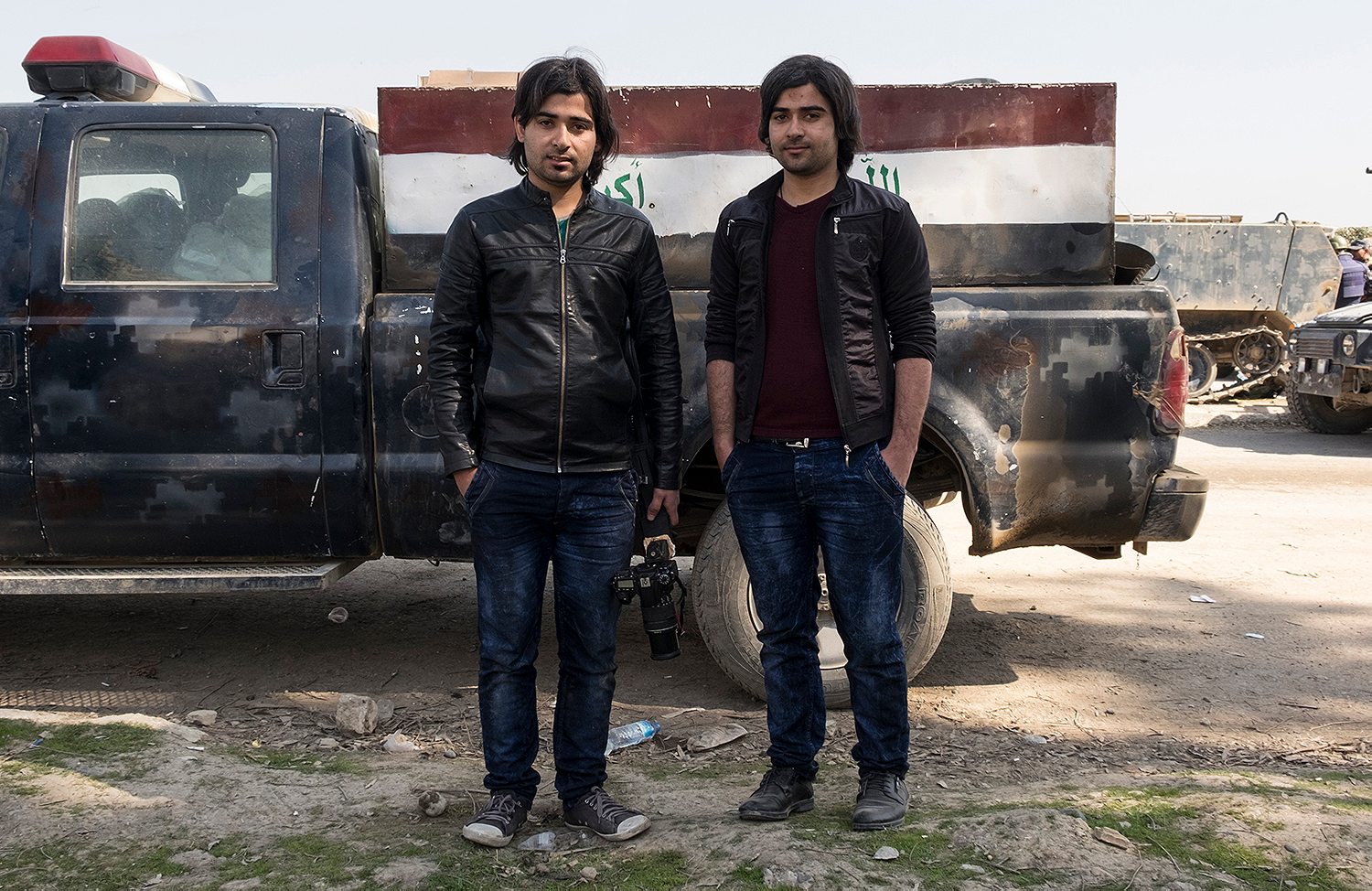
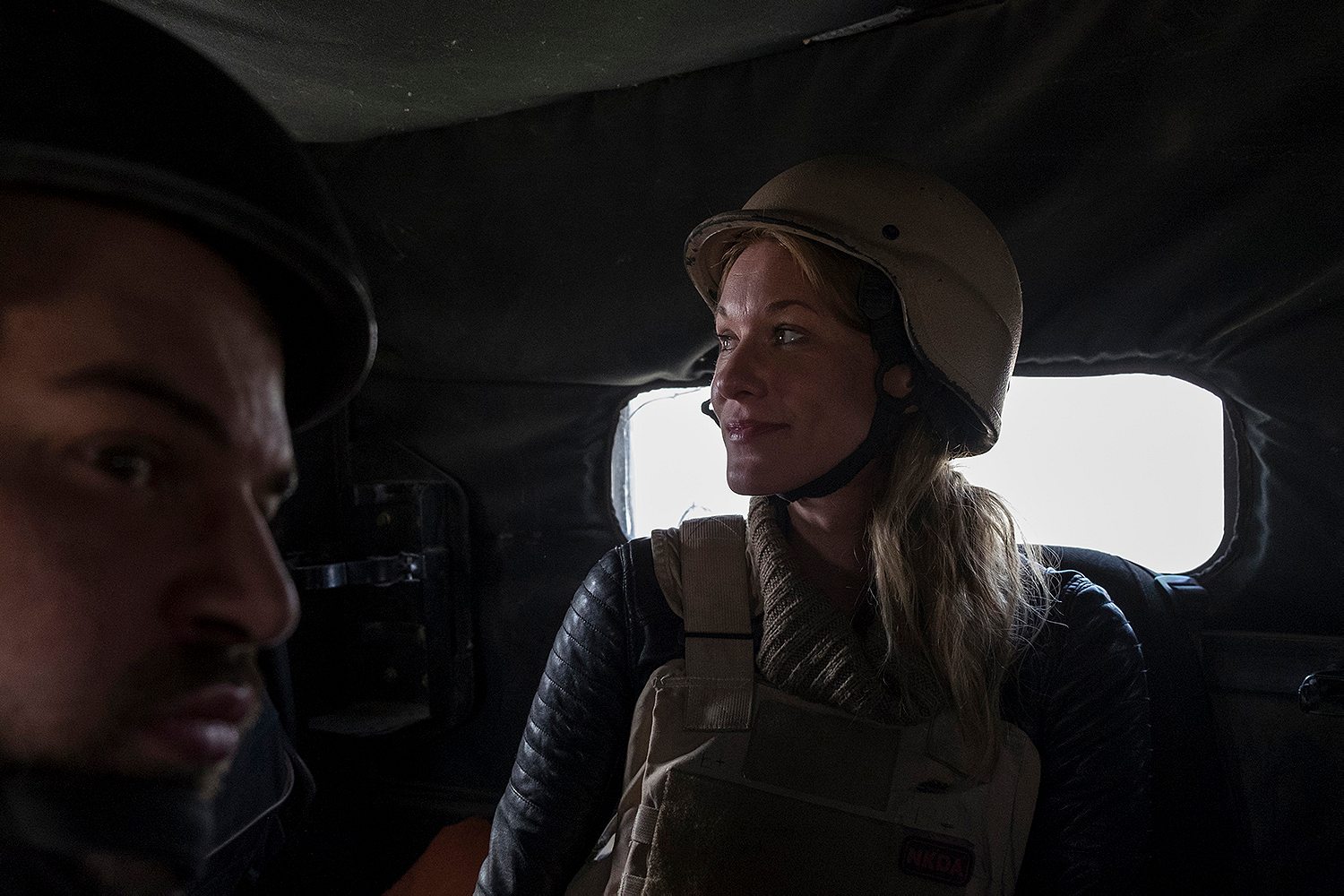
R&K: What about local photographers? More and more of them are getting their photos out there in the mainstream media. How was it different for you to see them work?
Veit: What I thought was especially interesting was seeing the fixers work. They have really great access to situations and they are doing interesting work as well. It’s a bit complicated because if you’re working as a fixer you should be assisting the people who hired you, but at the same time, they are there, they have the access, the opportunities, so why not produce something as well? It’s great that not only foreign journalists are being read, I think it’s very important for locals to be read and heard by the world.
R&K: I love the photo where you see the fixer too because you really get a sense of how important she is to the story.
Veit: It’s impossible to do work there without them. Every day there was a different situation: a new law, a new place to register, new paperwork to get to places… The fixers are very well connected and they also work as translators and as drivers. They’ll get you to the places you want to go. I interviewed the Brazilian photographer, Mauricio Lima, and he told me: they are putting their lives at risk for somebody else’s work, for somebody else’s words.
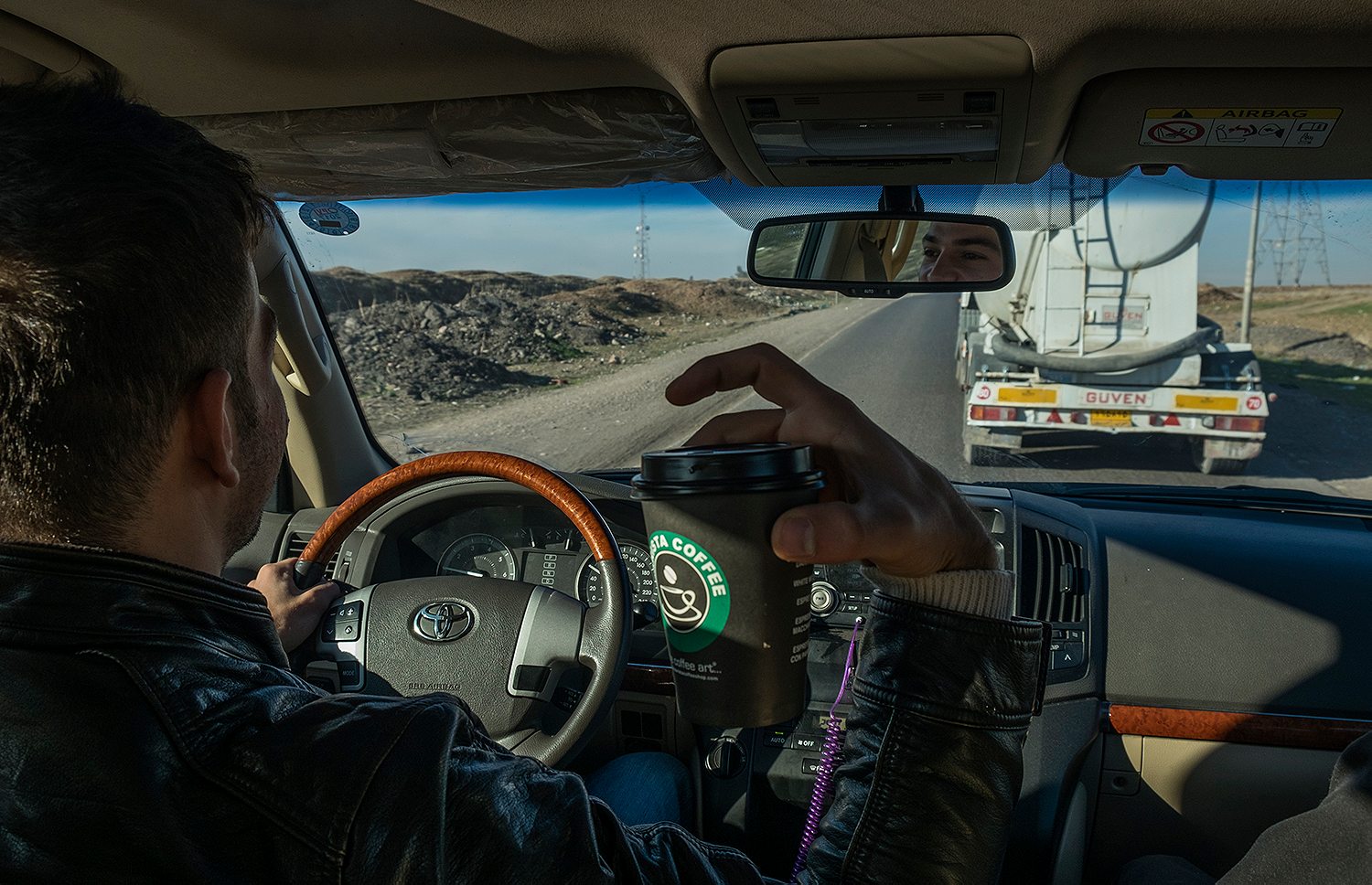
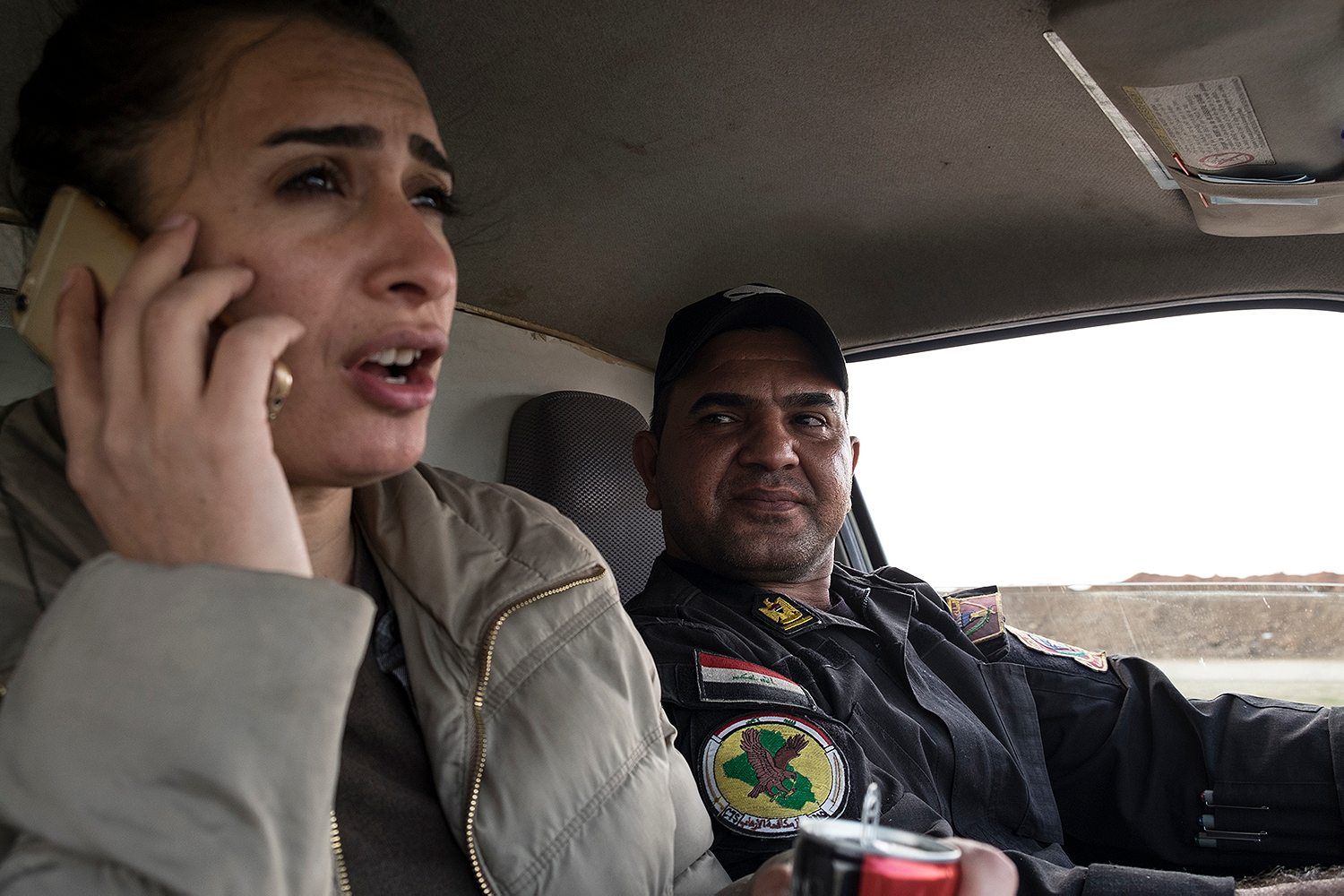
R&K: Earlier you used the word propaganda. Did you have a lot of conversations with photographers about this notion of constructing the news?
Veit: There are a lot of people involved in between the moment the photographer takes the shot and when the reader sees the image. That scene in the trenches I photographed, a Spanish newspaper published a photo of it a month later. And it’s not wrong, because it was used as an illustrative image of war, but at the same time it’s completely detached from the original situation. I think this is something for me to think about after I’ve been there. I don’t think people are getting a vision that is not real, it’s just that there are so many photographers and journalists there that they do have an impact. Propaganda is a very strong word, but of course, if you’re an army and you’re fighting, you want to be presented to the world in a powerful way. You don’t want people to see your weaknesses. So when military soldiers were coming back injured, they didn’t want you to photograph them. And you have to respect that. Most of the photographers, they respect that, because they’re being granted access to very important moments.
Each photographer is trying to find his own way to tell a story.
R&K: Did you feel like there was a pressure from editors to get photographers closer to the frontlines and to get images that were more sensational?
Veit: Actually, my impression is completely the opposite. I think for a young photographer, going to a place like this where you have a variety of things going on that you can cover is very interesting professionally. For instance, there was this French photographer who was there for two months and one day he did a story for a soccer magazine about a team in Mosul. You can create different types of stories and sell them to different media outlets. I don’t think there’s pressure to cover the fighting. I think there are people who really love to be on the frontline, but not all of them want to do this all the time. For instance, Lorenzo, who was photographing the victims inside the houses, told me: “I’ve done enough of that, I don’t want to do this here. I want to try to do something different.”
Maybe if you work for a hard news agency, you might need to have the spectacular photos, but that’s not for everyone. Actually, each photographer is trying to find his own way to tell a story and this is what I found fascinating for me as a photo editor. For them to try to give their voice, to try to find their unique way to see this conflict that everybody is covering.
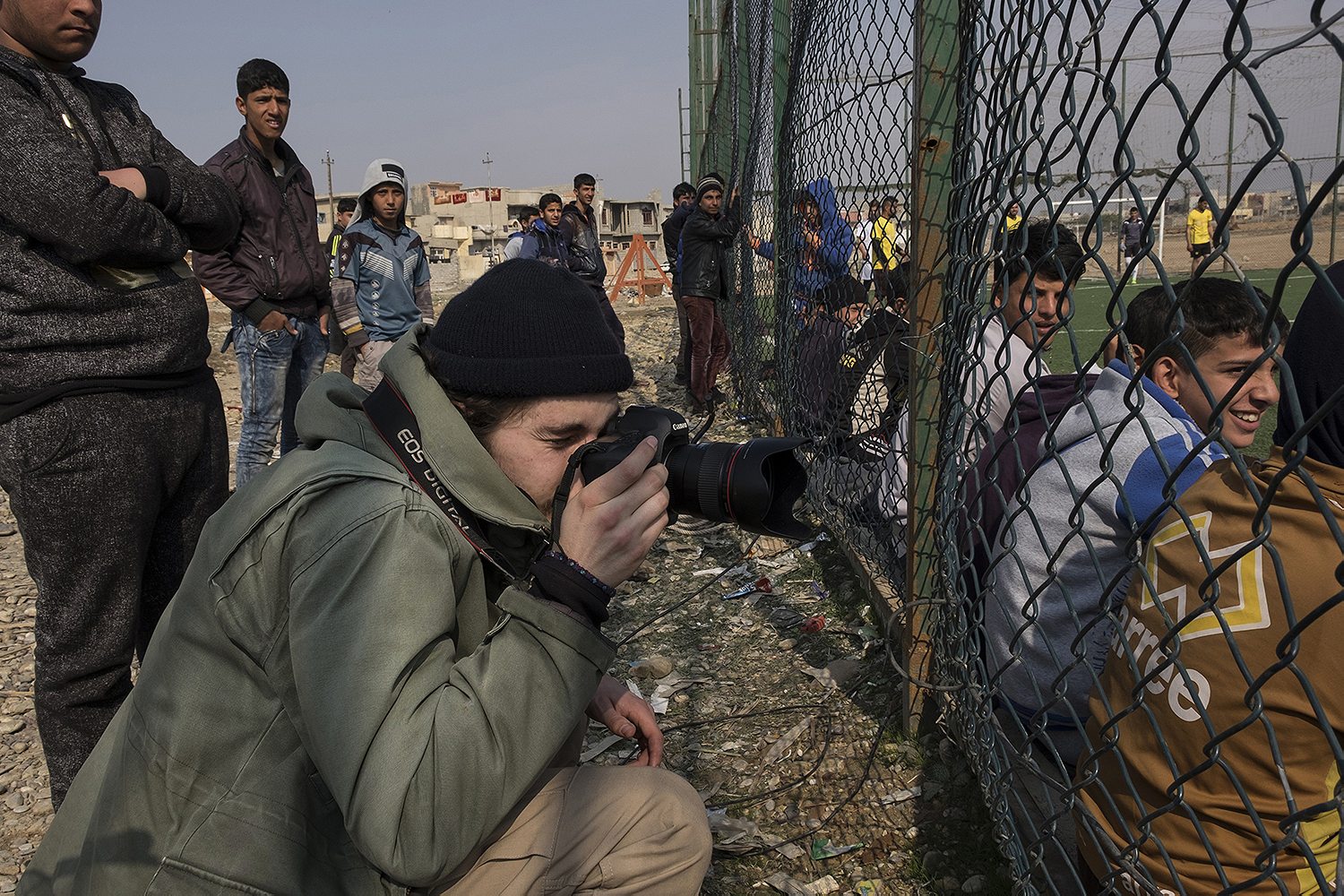
R&K: You can really tell that in your project, that every photographer has a separate personality and vision.
Veit: I’m glad you feel that because for me this project was just a really natural thing to do, as a photo editor and someone who had never been interested in conflict. I’m a newspaper reader, so I just thought: how are the photographers creating the stories that we receive?
R&K: Do you think this project changed your perception of a photographer’s job? And would it change your way of being a photo editor if you decide to work again in that field?
Veit: It changed everything. All I can think about nowadays is producing other stories like that. I want to keep photographing. I loved being a photo editor for many years, but now that I see how it is to be on the field and produce stories, I want to keep doing that. I’m interested in taking this kind of approach to other conflicts or other news events, that would be interesting.
R&K: I always wondered why, in all of the photos of refugee boats arriving in Greece, you never see the hundreds of photographers on the shore.
Veit: Exactly. And there were hundreds of photographers. And it impacts the story. I mean, imagine arriving on a beach and having hundreds of people photographing your arrival. I think it’s important to show this.
